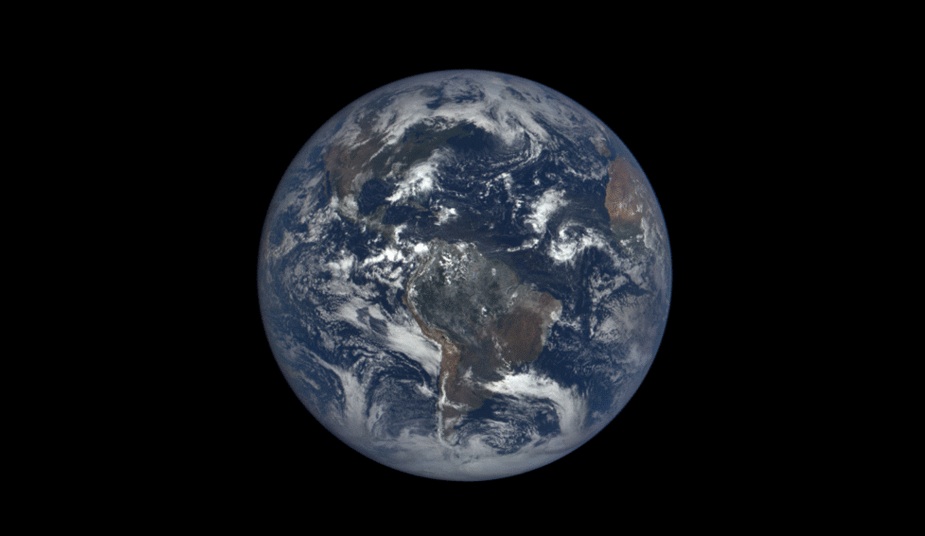'Epic' Photos of Earth to Be Shared Daily on New NASA Website

Stunning images of Earth's sunlit face, snapped by a satellite located 1 million miles (1.6 million kilometers) away from the planet, will be available daily for people to browse on a new NASA website.
The agency plans to post at least 12 new color images of Earth each day, taken by NASA's Earth Polychromatic Imaging Camera (EPIC) aboard the Deep Space Climate Observatory (DSCOVR).
"Each daily sequence of images will show the Earth as it rotates, thus revealing the whole globe over the course of a day," according to a NASA statement. "The new website also features an archive of EPIC images searchable by date and continent." [Earth from Above: 101 Stunning Images from Orbit]
EPIC is a telescope and camera that can take a series of 10 images in wavelengths ranging from ultraviolet (beyond the violet end of the light scale) to near-infrared (beyond the red end of the light scale).
EPIC keeps its exposures short (20 to 100 milliseconds long) because the Earth is extremely bright in the blackness of space, NASA officials said. As such, the camera's exposures are too short to capture background stars.
Each image is created from three separate exposures and is equivalent to what is viewable with a 12-megapixel camera (about what you'll find on the new iPhone 6s, for example). The effective resolution will be 6.2 to 9.4 miles (10 to 15 km).
DSCOVR's primary mission is to monitor solar wind — constant streams of plasma and charged particles that flow from the sun — and provide forecasts about its effects on Earth. These so-called space-weather events can cause effects ranging from auroras to satellite short-outs, depending on the intensity and direction of the solar wind.
Get the Space.com Newsletter
Breaking space news, the latest updates on rocket launches, skywatching events and more!
The satellite's images of Earth will also allow scientists to monitor how other features of the planet — such as cloud height, vegetation, aerosols and ozone — vary daily across the globe.
The images are available on the EPIC website. DSCOVR is a mission that includes partners from NASA, the National Oceanic and Atmospheric Administration and the U.S. Air Force.
Follow Live Science @livescience, Facebook & Google+. Original article on Live Science.
Join our Space Forums to keep talking space on the latest missions, night sky and more! And if you have a news tip, correction or comment, let us know at: community@space.com.

Elizabeth Howell (she/her), Ph.D., was a staff writer in the spaceflight channel between 2022 and 2024 specializing in Canadian space news. She was contributing writer for Space.com for 10 years from 2012 to 2024. Elizabeth's reporting includes multiple exclusives with the White House, leading world coverage about a lost-and-found space tomato on the International Space Station, witnessing five human spaceflight launches on two continents, flying parabolic, working inside a spacesuit, and participating in a simulated Mars mission. Her latest book, "Why Am I Taller?" (ECW Press, 2022) is co-written with astronaut Dave Williams.










